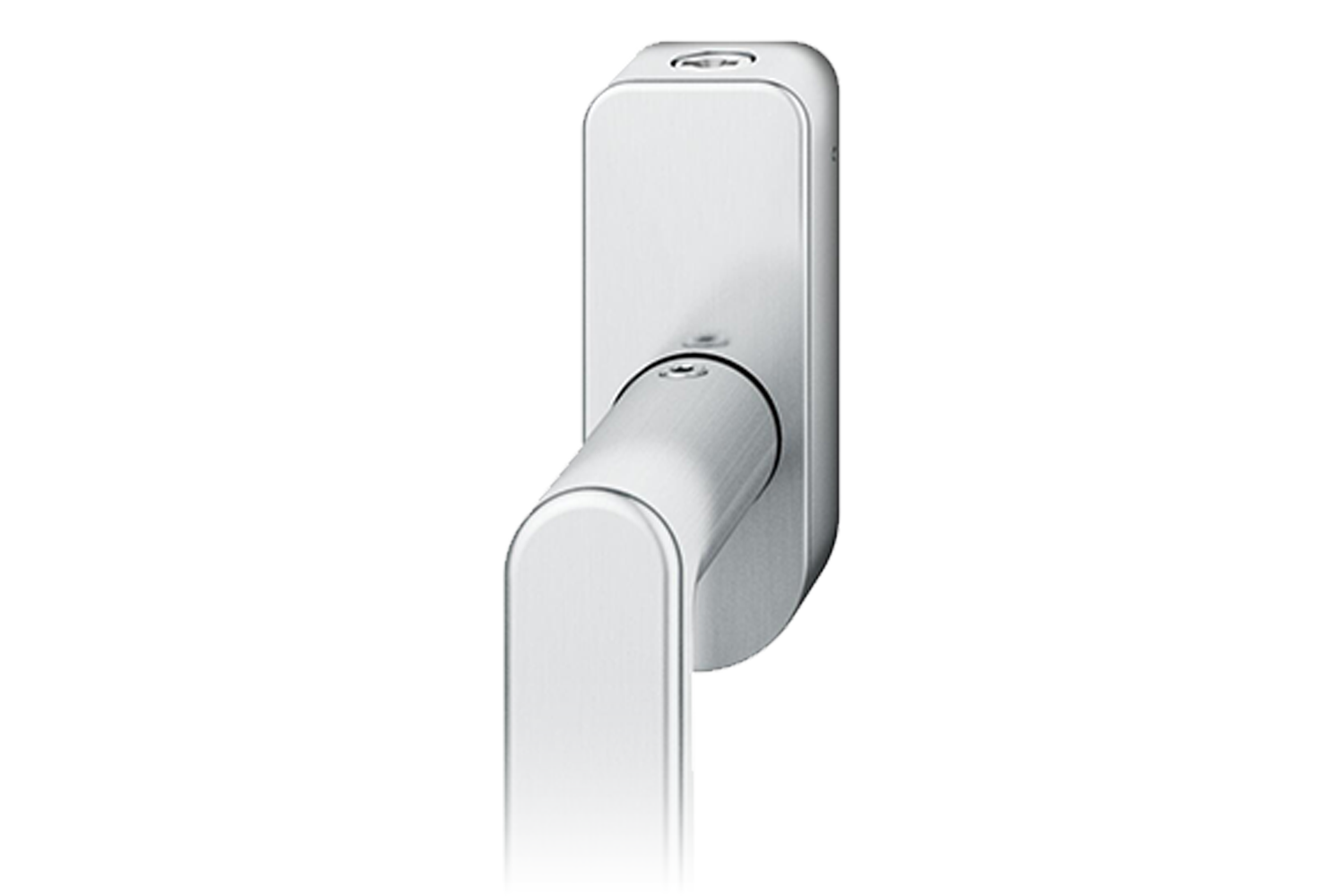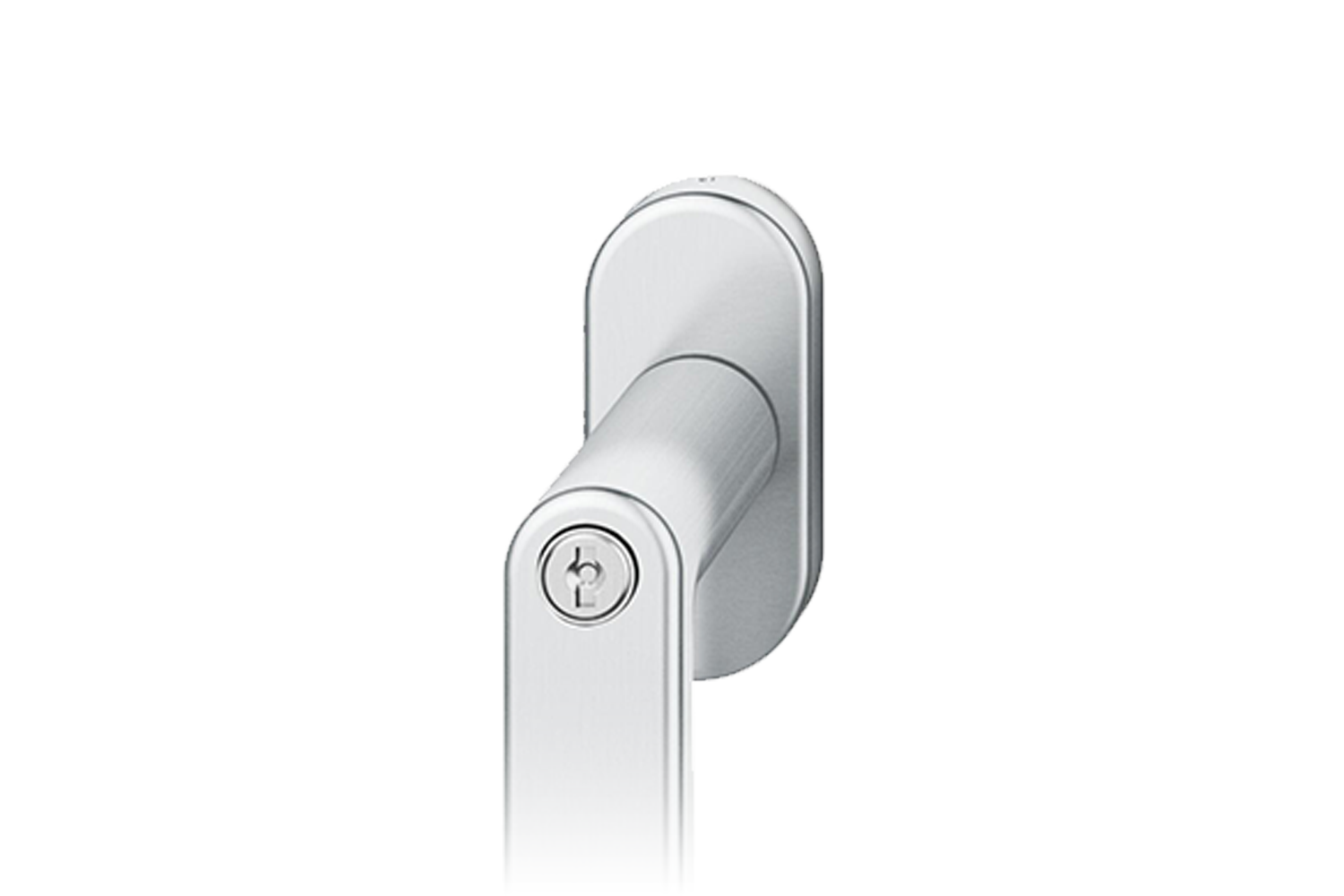Lockable window handles
Security that looks good

A poorly secured window can be prised open in less than a minute – depending on the quality of the glass, the window’s stability and, crucially, how well the handle performs. A significant degree of protection, therefore, is afforded by any measure that delays the act of breaking in in any way.
Open and tilted windows are a veritable godsend for burglars, and yet even closed windows are obstacles they may well be able to overcome. If the glass is of sufficiently poor quality, they can simply smash a hole in it and proceed to operate the handle from the outside.
This can be avoided, though. Closed is good but locked is better, after all. The FSB range includes window handles lockable by various means – either with or without a key. All variants have been tested for conformance to the relevant standards of deterrence to burglary.
Classic: lock cylinder in the rose
Whereas security tends to go hand in hand with a dearth of design where many of our fellow-manufacturers are concerned, with FSB you can be sure that every lockable window handle is embedded in a product collection with the aid of which any building can be fitted out in a formally cohesive manner that embraces both doors and windows. FSB supplies lockable window handles in which the lock cylinder is accommodated in the rose in all its design ranges.
New: lock cylinder in the handle
We have now come up with an alternative solution for our FSB 1076, 1108, 1244 and 1289 handle designs that is as convenient as it is visually discreet: the lock cylinder or key is inserted not into the rose but into the handle so that it points towards the user.
That enables a smaller rose to be fitted of the kind that usually accompany non-lockable window handles. The furniture looks particularly elegant in combination with an FSB 0810 finish in Blasted Black Anodised Aluminium. The cylinder is coated black for this variant in a departure from all the other finishes, where it is supplied in a silver colour.
Of great significance besides the quality of the click-stop mechanism, the force required to extract the spindle and the lock cylinder’s resistance to torque is the process of testing the resistance of window handles to twisting and forcing. In the highest class, the DIN EN 13126-3 standard lays down a resistance at the locking element of 200 Nm for such tests.
DIN EN standards 1627 to 1630 stipulate that the window handle be able to resist twisting and forcing of the burglary-deterrent element up to a rate of exertion of 100 Nm. Lockable window handles by FSB meet this requirement in full. This applies with regard to all resistance classes RC 1 to RC 6.
Keyless: push-to-unlock mechanism
Those favouring a no-key solution can opt for window handles with a push-to-unlock mechanism. These have to be operated with both hands, thus making it more difficult for them to be manipulated from the outside. They additionally suggest themselves as a means of securing windows in children’s rooms for instance.
















